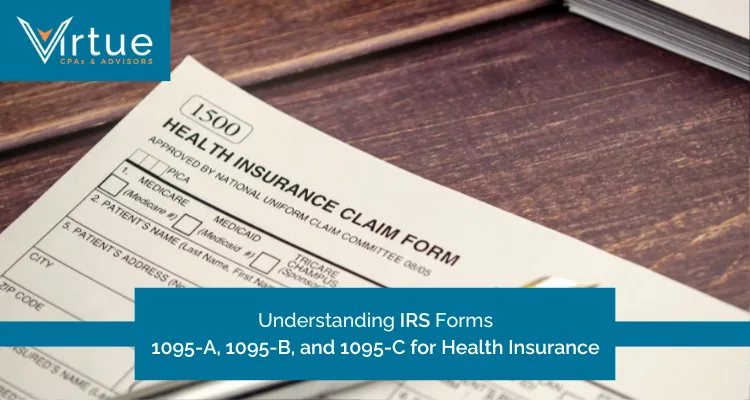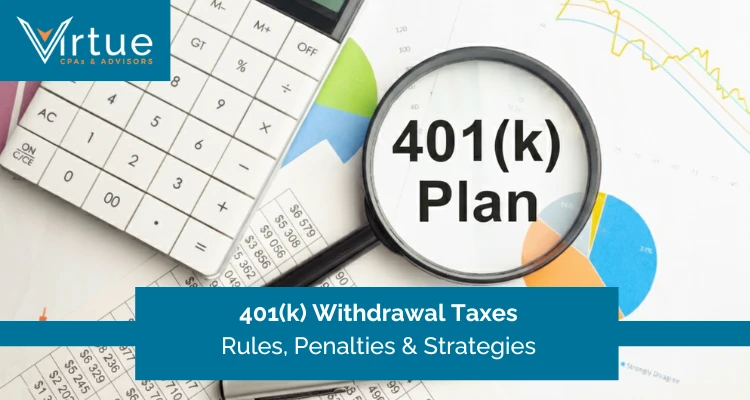If you’ve ever bought health insurance through the Marketplace, worked for a company that offers benefits, or had coverage from an insurer, you’ve probably heard of Forms 1095-A, 1095-B, and 1095-C.
They look like tax paperwork and, in a way, they are — but they’re mostly informational.
Why should you care? Because one of these forms (1095-A) can directly change how much tax you owe — or how big your refund is — by determining your Premium Tax Credit.
The other two (1095-B and 1095-C) are proof that you had coverage or that your employer offered you coverage, which matters for subsidy eligibility and for certain state rules.
If the info is wrong, your tax bill can surprise you.
That’s why reading these forms carefully matters.
This guide explains each form, shows exactly where the important numbers live, walks you through common scenarios, and gives step-by-step actions so you don’t get blindsided.
Quick comparison at a glance
Here’s the simple table you can memorize for dinner conversation:
- Form 1095-A — Issued by Health Insurance Marketplaces to people who bought Marketplace plans. Use it to complete Form 8962 and reconcile any advance premium tax credit you received.
- Form 1095-B — Issued by insurers, government programs (Medicaid, CHIP, etc.), or certain employers to show who had minimum essential coverage and in which months.
- Form 1095-C — Issued by Applicable Large Employers (ALEs — generally 50+ full-time employees) showing what coverage was offered to you and when. Used to determine subsidy eligibility and employer compliance.
Short takeaway:
1095-A = action (you must use it for Form 8962 if you claimed the Premium Tax Credit).
1095-B and 1095-C = records (keep them; they’re rarely attached to your return).
Form 1095-A (Health Insurance Marketplace Statement)
What it is and who issues it
Form 1095-A is issued by the Health Insurance Marketplace (federal or state exchange) to people who enrolled in a qualified Marketplace plan.
If you received advance premium tax credits (APTC) to lower your monthly premiums, the Marketplace will report how much was paid on your behalf — and you’ll reconcile that amount on Form 8962 when you file your tax return.
The Marketplace also sends a copy to the IRS.
Anatomy of the form
1095-A may look intimidating at first, but it’s mostly boxes and monthly numbers.
Here are the key parts you’ll use:
- Recipient information — Your name, address, and the policy’s contract number. Make sure your SSN (or the policy’s primary insured SSN) is correct.
- Covered individuals — Lists you, your spouse, and dependents who were on the Marketplace policy. Verify names and SSNs.
- Monthly premium (Column C) — The total monthly premium for your plan.
- SLCSP (Second Lowest Cost Silver Plan, Column D) — Important: this is the benchmark plan the IRS uses to compute your eligible subsidy.
- Advance payments of the Premium Tax Credit (APTC), Column E — This is what the Marketplace actually paid to your insurer on your behalf, month by month.
A quick example: if Column C shows $500/month, Column D (SLCSP) shows $700/month, and Column E shows $300/month of APTC for January, those numbers flow into Form 8962 calculations.
Remember, small changes in any column can change the credit you’re entitled to.
How to use it
You use the numbers from 1095-A to complete Form 8962 (Premium Tax Credit). The basic idea:
- Add up the annual premium amounts (from Column C).
- Add up the annual APTC (from Column E).
- Use the SLCSP numbers (Column D) and your household income to figure your actual premium tax credit for the year.
- Compare the actual credit to the APTC already paid. If APTC > actual credit, you may need to pay back part of the subsidy; if APTC < actual credit, you get the difference as a credit on your tax return.
This reconciliation is why accurate income estimates matter. If you told the Marketplace you expected a lower income than you actually earned, you might owe some APTC back.
Conversely, under-estimating income might reduce payments and leave you with a smaller refund.
When you must wait for it
Don’t file your return claiming the Premium Tax Credit until you have your 1095-A.
The Marketplace generally posts 1095-A forms by mid-January (dates vary), and you can also download a copy from your Marketplace account.
If you file early without the correct 1095-A, you could have to amend later.
Form 1095-B (Health Coverage)
1. Who sends it
Form 1095-B is issued by health insurers, government programs (Medicaid, CHIP), and some employers (particularly small employers that offer fully insured plans or self-insured employers who complete Part III).
It reports who had minimum essential coverage and the months covered.
The form helps show you aren’t liable for the shared responsibility payment (individual mandate penalties no longer apply at the federal level, but proof matters for state rules).
2. What’s on it
1095-B is straightforward: it lists the policyholder and covered individuals and marks the months each person was covered.
It’s essentially a calendar checklist of coverage. Unlike 1095-A, there are no SLCSP or APTC columns.
3. Do you need it to file taxes?
Generally, no, you don’t need to attach 1095-B to your federal tax return. It’s informational.
But you should keep it: it is proof of coverage in case of state requirements or IRS questions.
If your tax software asks whether you had coverage, you can answer based on your records, even if you don’t have the 1095-B in hand.
If you believe the insurer’s record is wrong, contact them for correction.
4. When it’s important
1095-B becomes important if:
- Your state has an individual coverage requirement that asks for proof.
- The IRS questions your coverage status (rare, but possible).
- You’re reconciling conflicting information from an employer or Marketplace.
In most cases, 1095-B is a “keep in your file” document — not a “staple to your return” document.
Form 1095-C (Employer-Provided Health Insurance Offer and Coverage)
1. Who must issue it
Form 1095-C is provided by Applicable Large Employers (ALEs) — generally, employers with 50 or more full-time employees (including full-time equivalents).
ALEs must furnish 1095-C to full-time employees and file corresponding transmittals with the IRS.
The form documents what the employer offered you with month-by-month offer codes.
2. Parts of the form explained
Part I: Employee and employer information (name, SSN, Employer Identification Number, etc.).
Part II: Offer of Coverage — the meat of 1095-C. For each month, codes show whether coverage was offered and whether it met affordability and minimum value rules. These codes are what the IRS uses to determine employer penalties and to help employees see if they were offered affordable coverage.
Part III: Only used if the employer is self-insured — it lists covered individuals and the months they were covered (similar to 1095-B).
3. Why employees get it
Employees receive 1095-C so they can check whether their employer offered coverage and, if they bought Marketplace coverage instead, whether they were eligible for premium tax credits.
If your employer offered you affordable, minimum-value coverage for the months you were full-time, you’re likely ineligible for Marketplace premium subsidies for those months.
That’s why Part II offer codes matter when reconciling Form 8962.
4. If you waived employer coverage
If you waived employer coverage (for example, you chose a Marketplace plan instead), 1095-C still shows what the employer offered.
If the employer’s offer was affordable and met minimum value, it could make you ineligible for subsidies for those months.
Therefore, you must always keep 1095-C, especially if you had Marketplace APTC — the IRS could compare the forms during processing.
When you might receive multiple 1095s
Life isn’t tidy. You might get more than one 1095, and that’s normal.
1. Common overlap examples
- Employer coverage + Marketplace coverage: You might switch mid-year from an employer plan to a Marketplace plan (or vice versa). You could receive a 1095-C showing an offer and a 1095-A showing Marketplace coverage for the months you were enrolled there. Use the 1095-A for Form 8962 reconciliation and the 1095-C to verify whether you were offered employer coverage for other months.
- Self-insured employer + insurer: If your employer is self-insured, they’ll provide a 1095-C with Part III details listing covered individuals. You might also get a 1095-B from an insurer if they administered coverage in certain situations. Clarify with HR which form reflects which months.
- Dependents on different plans: A child might be on Medicaid while you have Marketplace coverage for yourself. You could receive both 1095-A and 1095-B for the household. Reconcile coverage months for each individual when completing your tax forms.
2. How to reconcile overlapping coverage
- Match months — For each household member, map coverage month by month using the forms you received.
- Use 1095-A for subsidy reconciliation — If you were enrolled in Marketplace coverage and got APTC, Form 8962 uses 1095-A, no matter what 1095-C or 1095-B say about offers.
- Keep employer documents — 1095-C helps show whether an employer offered coverage that might make you ineligible for subsidies for specific months.
3. Special cases: COBRA, Medicare, TRICARE, VA
- COBRA: Coverage under COBRA is generally reported on 1095-B or 1095-C depending on the plan type.
- Medicare: Medicare coverage is not Marketplace coverage; it’s reported separately. If you have Medicare and Marketplace info conflicts appear, consult a pro.
- TRICARE / VA: These government programs may provide documentation of coverage — check specific program rules if your tax situation looks odd.
When you get multiple forms, don’t panic — map the months to people and use the Marketplace 1095-A if you claimed the Premium Tax Credit.
What to do if a 1095 is missing, incorrect, or late
Take a breath. Here’s a checklist and script for action.
1. Checklist — first steps
- Confirm whether you should receive it — If you had Marketplace insurance, expect 1095-A. If you had employer coverage from an ALE, expect 1095-C. If you had private insurance or government program coverage, expect 1095-B.
- Check online accounts — Marketplace, insurer, or employer HR portals often let you download forms. Don’t wait for the mail if you can download it.
- Contact the issuer — Marketplace call center, insurer customer service, or your HR/payroll department. Ask them to send or correct the form.
2. If it’s wrong
- Gather evidence — payment receipts, enrollment confirmations, emails, screenshots of your Marketplace account.
- Ask for a corrected 1095 — have them send it and document your request (save timestamps).
- Decide whether to file or wait — if you expect a correction that affects Form 8962 materially, you might want to wait. If filing is urgent, consult a CPA on whether to file now and amend later.
3. If you have already filed and received a corrected 1095-A
- Determine how the corrected information changes your Form 8962 calculations.
- If it changes your tax liability, file Form 1040-X with a corrected Form 8962. If you’re unsure, contact Virtue CPAs — small changes can have big consequences when subsidies are involved.
Conclusion
Forms 1095-A, 1095-B, and 1095-C are more helpful than scary once you know what they do.
1095-A is the one that plugs directly into your tax math via Form 8962 — so treat it carefully.
1095-B and 1095-C are records that prove coverage or an employer’s offer, and you should keep them in your files.
If anything looks off, document your communications, request corrections, and consider professional help for complicated reconciliations.
If this still feels like too much (or you already see numbers that don’t add up), Virtue CPAs can step in.
Our team specializes in ACA reporting, Marketplace subsidy reconciliations, and amended returns. We’ll review your 1095 forms, calculate how a corrected 1095-A would affect your return, and handle any needed Form 1040-X filings. We explain everything in plain English — no tax jargon, no surprises.
Ready for a professional review?
Contact Virtue CPAs today for a consultation and get your 1095s reviewed by a CPA who knows the ACA rules and how they affect your taxes.







